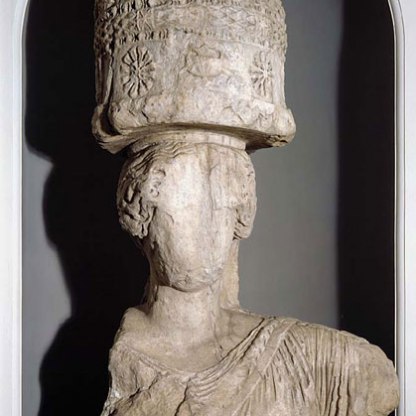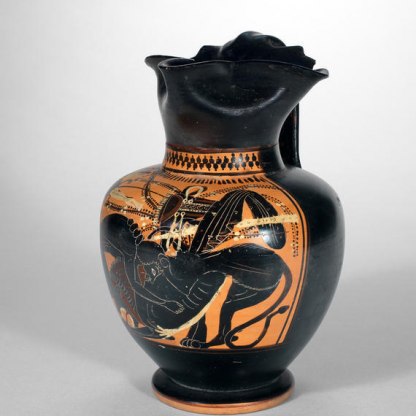Forepart of a Lion

'They have made the structure of their houses in every part marvellous ... for some parts have they constructed of silver and gold, others of ivory and the most showy precious stones, or whatever else men esteem most highly.'
The first-century BCE Sicilian historian Diodorus Siculus is here talking about the inhabitants of the southern Arabian peninsula, a region renowned in antiquity for its wealth based on the trade in incense and salt.
This magnificent bronze lion’s head was probably originally one of a pair made to flank a monumental gateway in what is now the Republic of Yemen. It came to the Fitzwilliam from the collection of Lieutenant-Colonel the Hon. M. T. Boscawen, who himself received it from his friend, Sultan Ali bin Salah Al-Qu’aiti.
For years it had been lying on its side on the sandy floor of a house in the small village of Hurta Ratha in the Hadhramaut, the southernmost region of Yemen. In antiquity, this area had been one of the richest and most powerful kingdoms in southern Arabia, and this lion must have adorned the gateway to a building of some importance. It is hollow-cast in bronze using the lost-wax technique.
With his bristling mane, the wrinkles caused by his snarl, his sharp fangs and protruding tongue, this lion commands respect. Stylistically it shows influence from the Persian empire, although the idea of having lions flanking gateways seems to have originated in northern Syria. It continues to this day – four lions flank the portico of the Fitzwilliam Founder’s Building, left.
When he brought the lion’s head back to England in 1932, Boscawen was offered £5,000 for it by the great collector of antiquities, Lord Duveen. He refused this offer, however, on the grounds that it was a gift and not his to sell. The lion was the first item in Boscawen’s great collection of bronze sculptures, which now resides in the Fitzwilliam.
Themes and periods
Data from our collections database
Forepart of a hollow cast lion, probably from a door lintel
Acquisition and important dates
- Method of acquisition: Given
- Dates: 1979
Dating
Materials used in production
Read more about this recordOther highlight objects you might like
Suggested Curating Cambridge products
Sign up to our emails
Be the first to hear about our news, exhibitions, events and more…





